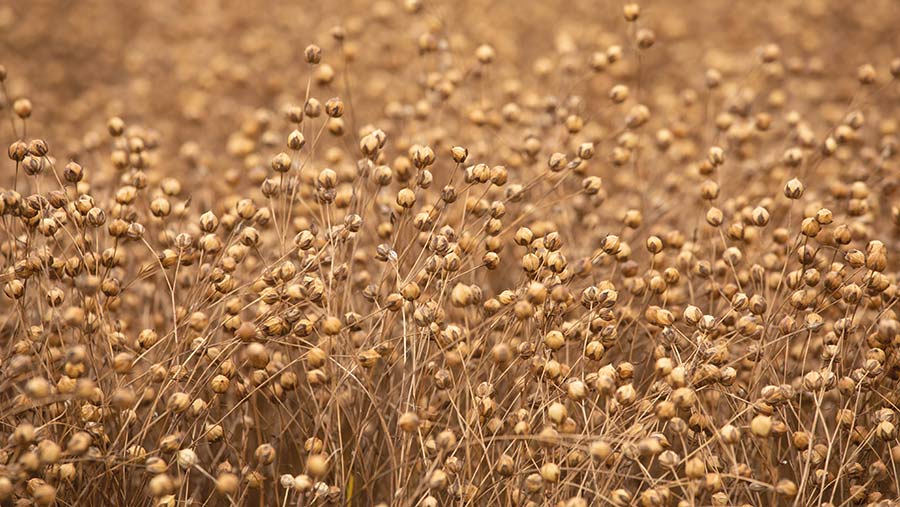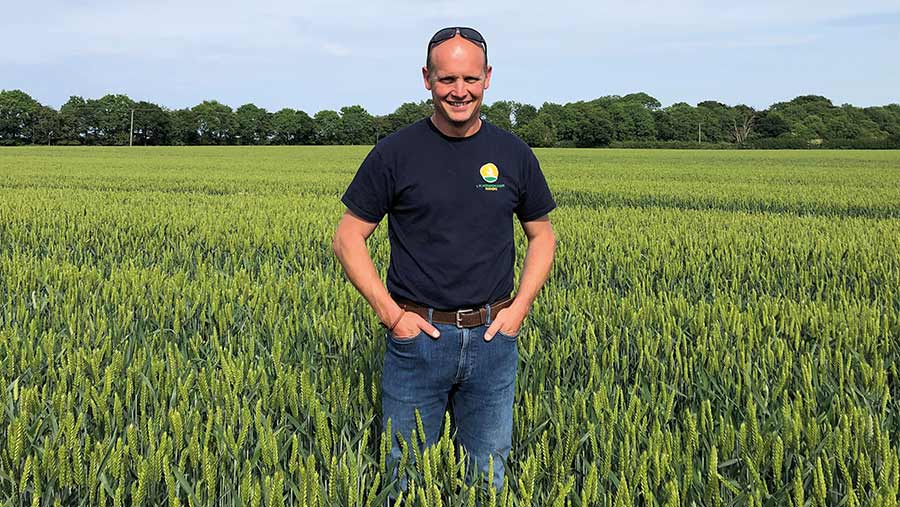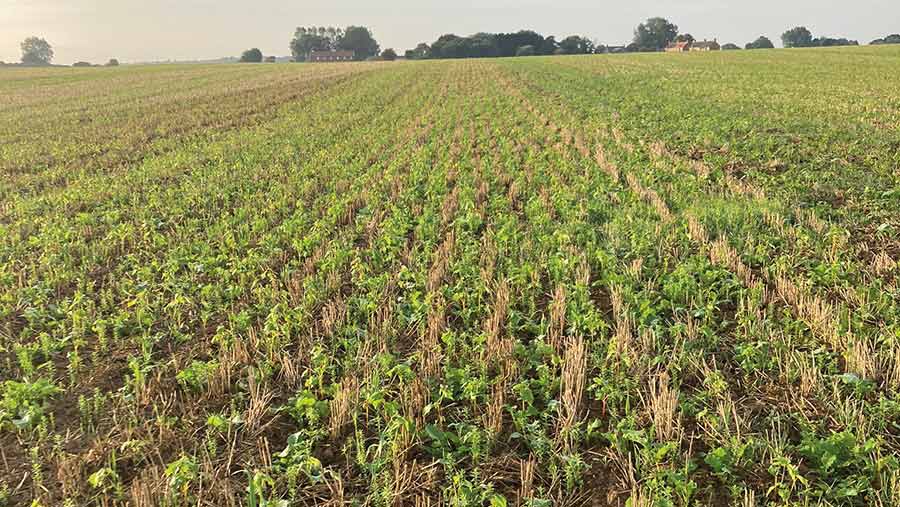How Yorkshire grower reduced risk with regenerative system
 © Tim Scrivener
© Tim Scrivener A focus on saving money was the start of Jonathan Hodgson’s interest in developing a regenerative farming system, as he looked for ways to reduce input costs, but maintain profits on his East Yorkshire farm.
Back in 2019, he decided to make changes – to gradually reduce soil disturbance before widening the farm’s rotation, make use of cover crops and then integrate livestock.
Eventually, a whole farm approach would add diversity and improve resilience.
See also: Regenerative Agriculture: A Scottish farmer’s low risk approach
Given the current inflationary pressures that the farming industry is experiencing, Mr Hodgson is pleased that he started limiting the farm’s exposure to risk when he did.
Although he does admit that he has spent more time in his crops ever since.
“There has been more management time involved,” he reports.
“However, we’ve known for a while that we’ve got to be cleverer with the way that we use nitrogen and other inputs.
“So it’s an investment that should be repaid as we find out more about how to do this successfully.”

Jonathan Hodgson © Jonathan Hodgson
No-till research
Mr Hodgson did plenty of research and consulted books, podcasts and webinars at the outset. He also joined farmer organisation Base-UK, so that he could learn from others and tap into their combined experience to get the system to work.
“We’ve always done trials on this farm and been keen to look at other ways of doing things,” he says.
“Insecticides were cut out five years ago and we stopped making phosphorus and potassium applications a year after that.”
Mr Hodgson farms 280ha of arable and grass grown on high magnesium soils at South Frodingham, near Hull.
He bought a 3m Mzuri drill four years ago for the new approach, having decided that a disc drill would be too much of a leap at that stage.
“Our soils weren’t quite ready for that,” he recalls. “As the system matures and soil health and function continue to improve, we may well have to move on. Time will tell.”
Rotational changes
To his original rotation of winter wheat, vining peas, spring barley and oilseed rape, he has added oats, spring beans and flax.
New to the farm this year are herbal leys, which are being used to get on top of blackgrass and make good use of less productive land. They will be in place for four years.
The plan is to cut the herbal ley for hay and run some sheep over it in September, before eventually putting the fields back into arable production.
“It’s work in progress, although I’m very pleased with the way that it’s grown this year.”
Cover and catch crops are now an integral part of the system, so that living roots and nutrient cycling can be exploited at every opportunity.
Soil organic matter levels are currently about 4%, reflecting the farm’s use of organic manures and chopped straw over the years, as well as its more recent reduction in cultivations.
Sap-testing
Elsewhere, reduced-input winter wheat is being grown, with sap-testing being used for the first time this year to fine-tune the nutrition programme according to need and keep the crops healthy.
A field of Astronomer, being grown after vining peas for seed, has received just 120kg/ha of nitrogen and two fungicide sprays, with no plant growth regulator applied.
“We did graze a small area of it with sheep for a week in early spring, so that patch hasn’t received any fungicide,” reveals Mr Hodgson.
“I’ll see how it performs at harvest – there was nothing left after the sheep had been moved.”
The hard Group 4 winter wheat Theodore is being grown without any fungicides at all – as it was last year – following a crop of beans.
It received pig muck in the spring, which supplied 20kg/ha of N, taking the total N applied to 160kg/ha.
A carbon source in the form of molasses is always included with N applications, to improve N use efficiency and help to feed soil biology. Each N application is limited to no more than 40kg/ha.
Variety strengths
To date, Theodore’s strong disease-resistance package is working well. He is also pleased with look of feed variety Typhoon, which is new to the farm this year and should suit a lower-input approach.
Home-saved seed without any dressing is standard practice wherever possible, with testing being done to check for any seed-borne disease before drilling.
Variety blends are of interest for their greater resilience and lower risk, and Mr Hodgson is hoping to introduce some this autumn.
Oilseed rape has kept its place in the rotation, with 20ha of Ambassador and 20ha of Acacia in the ground this year. It receives a total of 120kg/ha of N in three splits, but no fungicides.
A companion crop of buckwheat, vetch and berseem clover was grown with it, before being taken out with Astrokerb (aminopyralid + propyzamide).
“The only other application used is any nutrition that the crop has needed, identified through sap-testing.”
Spring crops
Spring beans were introduced three years ago. Mr Hodgson admits that he is still working out how they fit in a rotation that contains vining peas.
Having been the highest gross margin crop on the farm last year, he didn’t use a pre-emergence herbicide this year because of the dry weather, but has hoed the crop and used a split dose of Basagran (bentazone).
Otherwise, no insecticides or fungicides have been applied yet, just a magnesium/manganese product, with foliar nitrogen being considered to boost podding.
Spring oats have been consistent in the new system. This year, they are following the use of a 10-way cover crop mix, with a seed cost of £43/ha.

10-way cover crop mix © Jonathan Hodgson
The cover crop was grazed off with sheep in January and pig muck was applied before drilling. Tests showed that 270kg/ha of N was being held by the cover crop’s biomass.
“I’m interested to know where the nitrogen is and how much is available to the crop,” notes Mr Hodgson.
“I thought the oat crop wouldn’t need any application, but I lost my nerve and went through with 45kg/ha as it was showing signs of lack of enough nitrogen.”
Spring barley is proving more tricky to get right in a no-till situation, he acknowledges.
“It’s following a grazed cover crop and it had pig muck, but it might have been a bit wet when it was drilled. I’ll probably try a higher seed rate next year.”
Like his other spring crops, the spring barley hasn’t received any fungicide or insecticide, but will be sap-tested for any nutritional requirements.
The spring barley is destined for Muntons, and then comes back to the farm for use in Great Newsome Brewery, which is run by Mr Hodgson’s brother.
While there has been some yield adjustment as the system has bedded in, Mr Hodgson prefers to look at margins as a measure of success.
“I’m happy with what we’re seeing. We’re still learning and there’s always room for improvement.”
Stewardship
The farm has just started a new Mid Tier Countryside Stewardship agreement, which will see 6ha of land coming out of production.
Most of that is marginal land and awkward corners, reports Jonathan Hodgson.
It will fund 35ha of cover crops, include an area of the two-year rotational option AB15, and make use of the winter bird food option AB9 on some land that is prone to flooding.
Whether the sustainable farming incentive is relevant this year remains to be seen, he says. “I haven’t really had the chance to study it properly yet.”
Diversification
The Hodgson family has diversified into tourism, having established Little Otcham Glamping, and also runs a firewood business, Holderness Logs.
Little Otcham Glamping has a shepherd’s hut and four luxury bell tents available – both of which are conveniently located for a visit to their sister business, Great Newsome Brewery.
Holderness Logs specialises in sustainable hardwood logs, sourced in the Yorkshire region.

